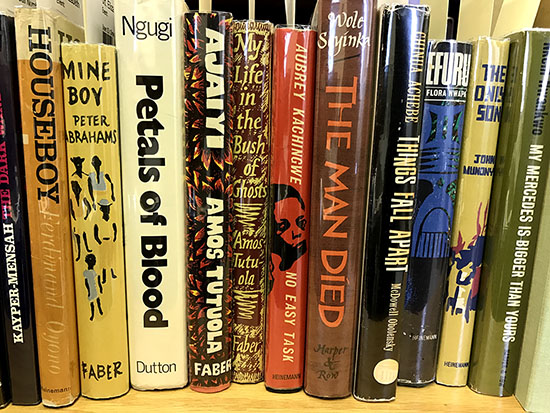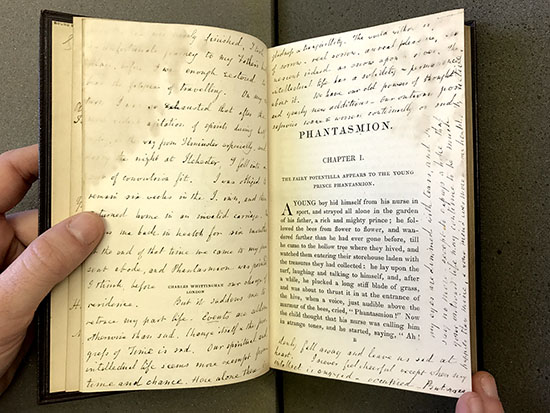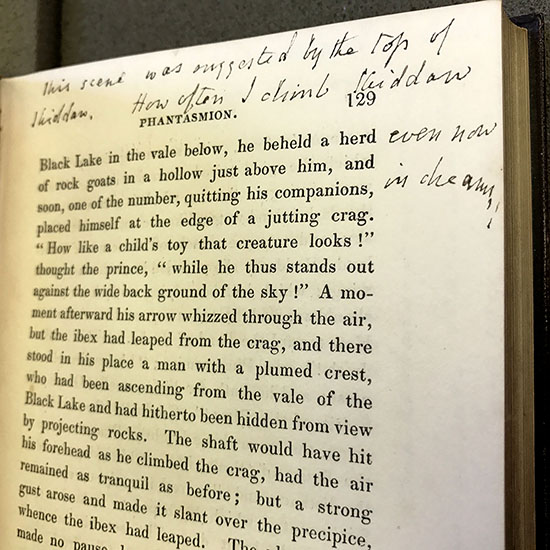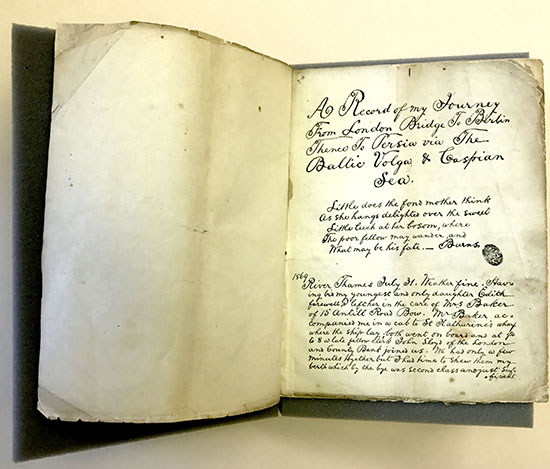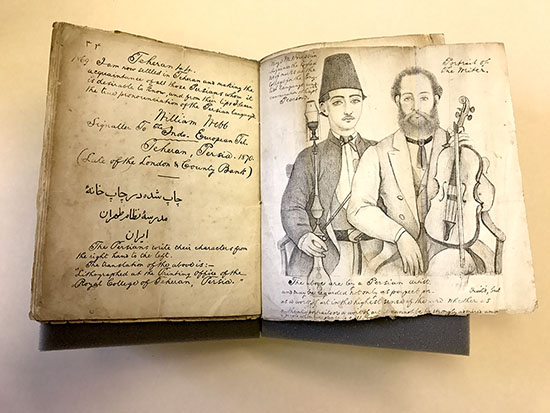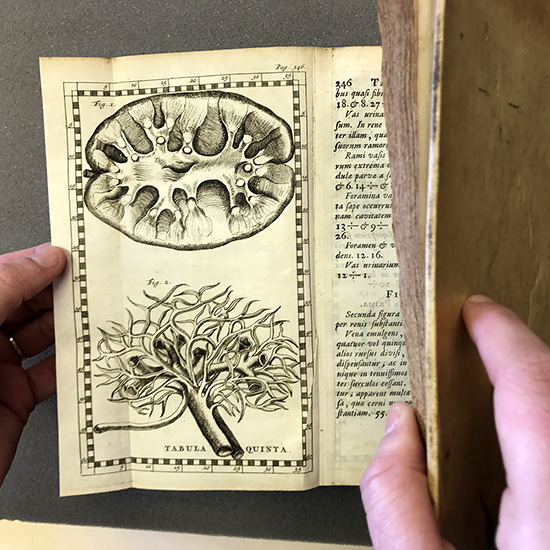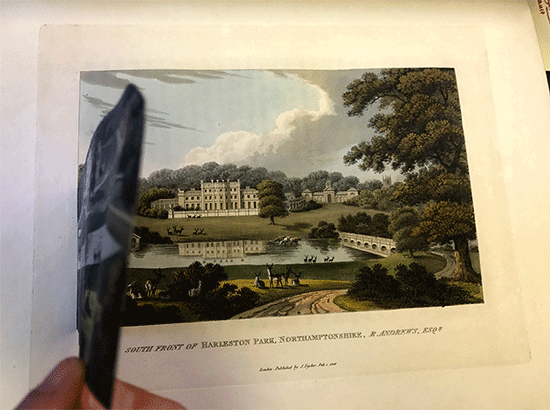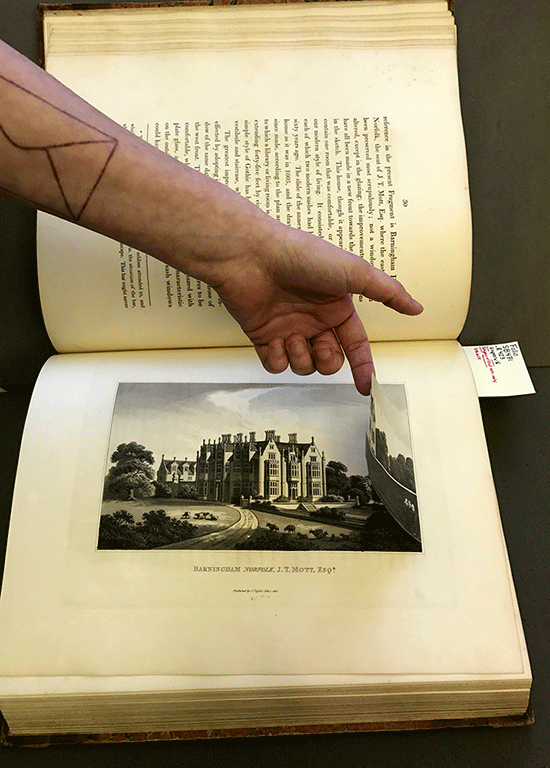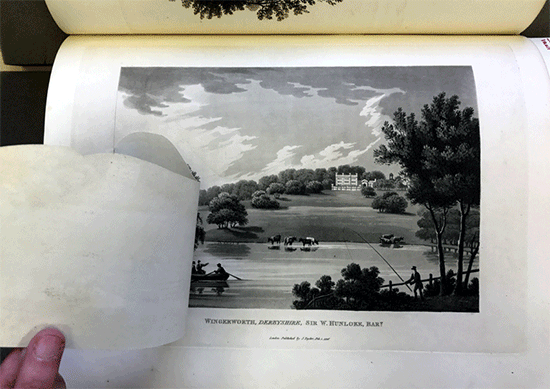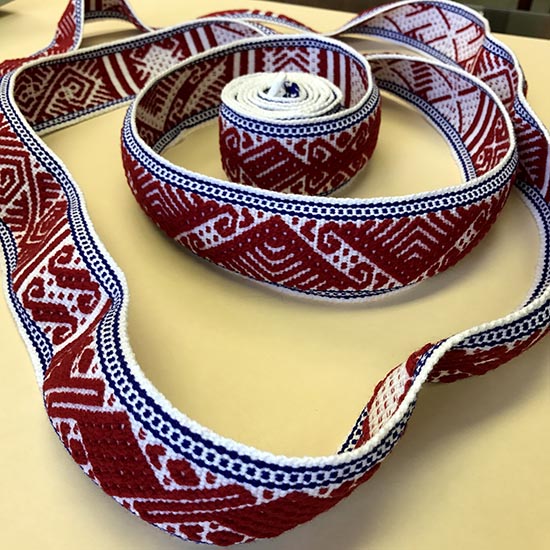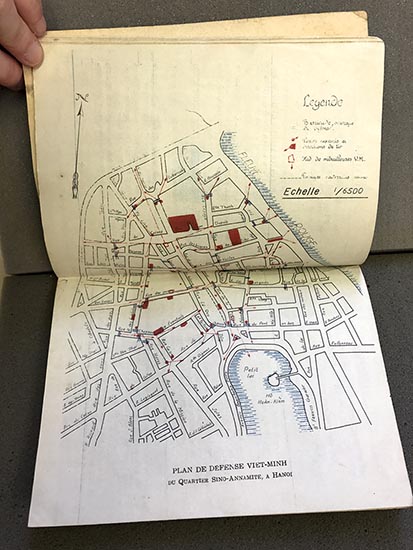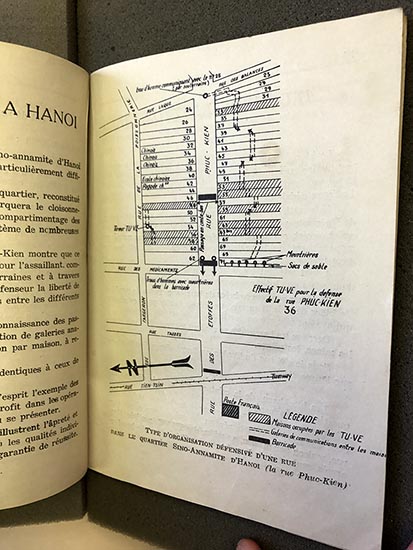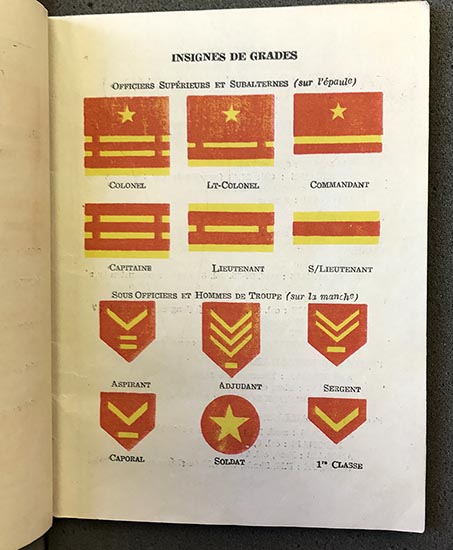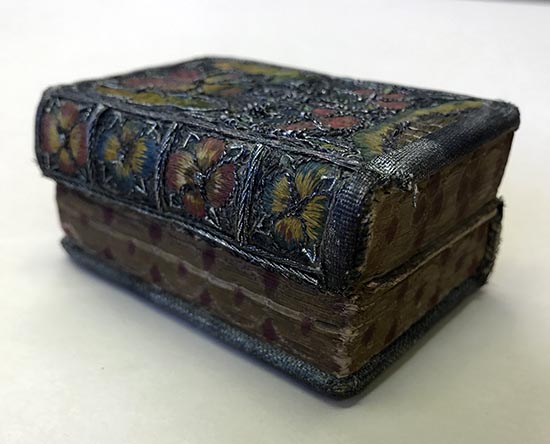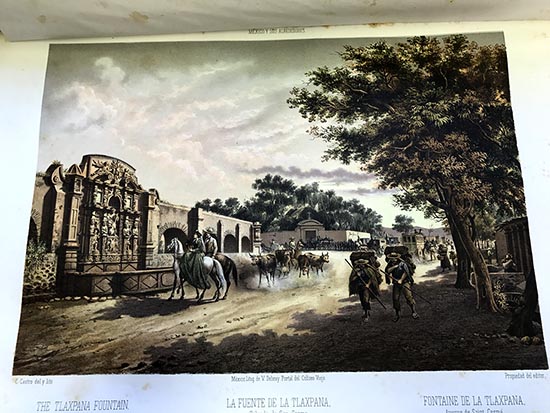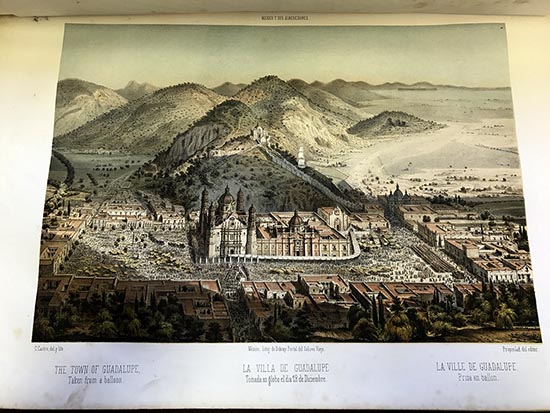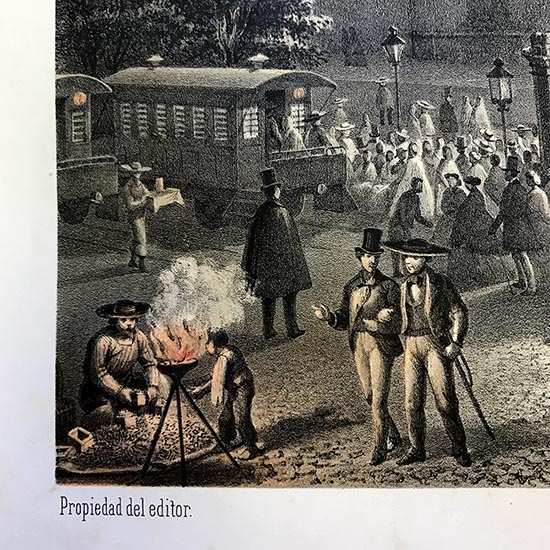Our Recent Acquisitions Evening is tonight! We hope you’ll be there to examine some of our remarkable recent acquisitions, including the Library’s eight-millionth volume!
Livre de Prières, published in 1886, is a book of hours–a book of devotional literature used by laypeople to guide their prayers throughout the day.
Books of hours have been an important genre of book since the medieval period and are the most common type of surviving illuminated manuscript. The style of illustration used in Livre de Prières is a pastiche of many kinds of illumination and manuscript decoration from different eras and geographical locations across Europe.
Livre de Prières is the first and only illustrated book woven on a Jacquard loom. The Jacquard loom was invented in 1804; it employs a punch card system of programming to produce complex woven patterns of textiles. This punch card system inspired 19th-century inventor Charles Babbage, who examined the loom while working on his Analytical Engine. Employing an estimated 200,000 to 500,000 punched cards to complete its complex design, Livre de Prières is considered to be a precursor to computer programming.
Because the UNC Library’s eight million plus volumes now include electronic books, Livre de Prières was selected to mark the ever-evolving technological innovations in the Library’s collections.
See this incredible volume and more in just a few hours at the Rare Book Collection’s Recent Acquisitions Evening, a not-under-glass display of some of the Collection’s notable acquisitions. We hope you’ll join us for the unique opportunity to see these incredible items up close.


